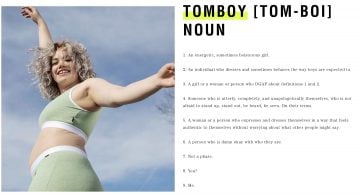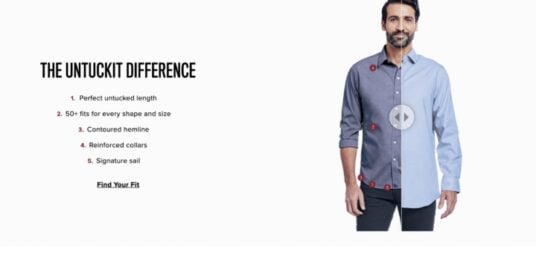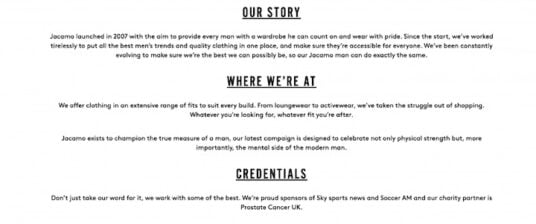15 Winning Niche Market Examples (Updated for 2024)
Matthew Turner
Updated by Tara Malone
Niche…it’s a word that comes up often in the business world. You’re told to find a niche so you can become an authority inside it. You need to start small, and then you can expand outward over time and be a big-time player in a large industry.
The same could be said for online courses.
Maybe you’ve created one (or a few) already and struggled to build momentum. Maybe you plan to create one and want to ensure it doesn’t fail like so many do.
Either way, a good place to focus your attention right now is on finding the perfect niche market for you.
That’s our aim with this article – to inspire you with 15 niche market examples, and to help you uncover the right niche for your online course business.
Let’s get started!
What is a Niche Market?
Let’s begin by taking a quick look at what a niche market actually is.
A niche market is a segment of a larger market that you can define through its unique needs, preferences, or identity. For example, vegan face wash is a niche market in the face wash market.
No matter what market you look at, you can almost always refine this further and create a series of niche markets. Some of the most common ways to identify a niche market like this is through:
- Price
- Demographics
- Level of quality
- Psychographics
- Geographic area
- Lifestyle
- Occasion
- Profession
- Style
- Culture
- Activity or habits
- Behavior
- Feature reduction or addition
No matter what industry you’re in, there is a more specific, further refined niche market you can enter and master. Once you do, in time, you can expand out and enter different niches. Yet true success so often begins within a single niche. And having that single niche helps give you direction to nail down a very specific (and effective) marketing strategy – including what channels you use, what demographics you target, and the type of copy you use in your emails, texting ads, and any other initiative.
We’ll share some of our favorite niche market examples with you now so you can see for yourself.
15 Niche Market Examples
The following niche market examples are some of our favorites. Further down in this article, we’ll bring focus back to online courses. Yet there’s so much to learn from other industries we didn’t want to simply share a list of successful online course niche market examples.
Each item on this list packs unique lessons you can learn from.
Take note of every one, starting with the first niche market example we love…Lefty’s.
1: Lefty’s (niche market: left-handed people)

Between 10 to 12% of the earth’s population is left-handed. So a store in San Francisco (Lefty’s) decided to sell products specifically for this often forgotten niche.
One of Lefty’s core strategies is to target people online and in search engines. So when someone searches for ‘left-handed pens’, for instance, they’ll likely see an ad from Lefty’s.
What You Can Learn From This Niche Market Example
Lefty’s niche doesn’t surround a product. They sell a wide range of them, and they appeal to different people of different ages across the world. Yet what they do offer is very specific, targeting a particular demographic: left-handed people.
Only 10% of the population fit this demographic, yet it still represents a large body of people.
2: Bee’s Wrap (niche market: conscious consumers)

In recent years, the conscious consumer has become more a part of the mainstream. Vegan, eco-friendly and cruelty-free products are in demand, simply because the grander conversation around these subjects has changed.
People’s expectations have changed with it, and companies like Bee’s Wrap have taken notice.
Providing a plastic-free alternative to food storage, their entire brand and values center around sustainability and environmentally kind initiatives.
What You Can Learn From This Niche Market Example
Take notice of the conversations happening around you. Had Bee’s Wrap tried to do what they do ten or twenty years ago, it’s doubtful they would have met a demand. Yet today’s conversation is perfectly aligned with their message, as their niche market is sure to grow in size.
3: Patricia’s Couture (niche market: pet owners)

In 2020, pet owners spent billions of dollars on their pets. This is a very large industry dominated by some very large companies. Yet as Patricia’s Couture proves, there are many niches within this massive sector.
Creating bespoke clothes (for both humans and animals) with your pet’s face as the design, Patricia appeals to a very particular someone.
What You Can Learn From This Niche Market Example
The starting point is often in a large and established market (the pet industry). From there, think about how you can appeal to a small but engaged audience. By doing this, Patricia’s Couture is able to sell a premium product because they offer what nobody else does. For the right kind of pet owner, a service like this is not only appealing but solves a problem they never realized they had.
4: TomboyX (niche market: the LGBTQ+ community)

One of the fastest-growing communities is the LGBTQ+ one. As with the conscious consumer, it’s part of a big conversation. It’s led to acceptance where there previously was none (as well as education to the masses).
As the line between genders blurs, there’s less need for men and women apparel; and a growing need for companies who just serve…people.
Enter TomboyX and their clothes for any body.
What You Can Learn From This Niche Market Example
Again, listen to the conversations happening and the ones that are changing. Beyond this, stand up for someone. Create a message that speaks to someone. Be the only answer for…SOMEONE!!
What TomboyX offers goes way beyond their products. It’s a message an entire community can get behind. It may only appeal to a niche market, but those inside it have a lot to say.
5: The Middle Finger Project (niche market: female business owners)

Ash Ambirge has found a niche within a niche. She doesn’t only speak to female business owners, but rather female business owners looking to grow a fresh, unique, and bold business.
Everything about Ash and her brand, The Middle Finger Project goes against the grain, from her language, design, style, and persona. Is this what you expect to see in the business world? No. Is this what all female business owners are looking for? NO!
That’s the point. Ash has found an engaged niche and become a true authority within it.
What You Can Learn From This Niche Market Example
Your aim (no matter what course you build) should focus on being someone for somebody.
By targeting the right niche, you can rise to authority; you can become the go-to authority figure. It may not always equate to fame and mass followings, but authority, respect, and power allow you to carve success no matter what industry you’re in.
6: Untuckit (niche market: casual shirts)

Untuckit creates shirts for men who like to wear them untucked. There are many shirtmakers around the world, and many of them sell casual shirts like this. But few dedicate themselves like Untuckit does, offering 50+ fits to suit guys of all sizes.
They’re the perfect example of a company mastering a niche and slowly expanding out, as Untuckit now offers other male products like polo shirts and jackets, and have even started to cater for women, too.
What You Can Learn From This Niche Market Example
Untuckit met a need. As most men know, finding a shirt that fits just right is difficult. Most cater toward formal shirts too, so finding a well-fitting casual shirt is even harder. Untuckit solved a simple problem that nobody else was. In time, they’ve expanded out and started to niche up from their niche.
7: Nomatic (niche market: travelers)

The rise of the internet has led to more people building successful careers as freelancers, contractors, and digital nomads with no need for an office or desk. As such, more people are moving away from the standard view of homeownership and instead traveling the world from one Airbnb to the next.
Nomatic specifically caters to this niche, providing suitcases and backpacks to those who need to bring their work with them. No matter what work you do, if you’re a freelancer or digital nomad, Nomatic has the perfect solution for you.
What You Can Learn From This Niche Market Example
When it comes to finding the right niche, you don’t have to invest in something new. For the most part, Nomatic’s luggage is like any other. Yet there are subtle differences that “speak” to remote workers.
Their messaging as a whole is aimed solely at them.
Once you speak to your niche like this, building trust and rapport is a lot easier.
8: Freelance at Work (niche market: remote workers)

As mentioned above, the world’s changing where more people are spending less time in an office. For most freelancers, the local coffee shop is the only office they need. Yet working remotely brings its negatives, mainly an ever-changing list of clients.
Freelance at Work addresses this problem by creating bespoke decals for your laptop. This means whenever you sit down to work, you advertise who you are and what you do. This can not only lead to new work but connections with fellow freelancers and remote workers.
What You Can Learn From This Niche Market Example
Think about who you serve and what their pain is. Oftentimes the solution you can offer is a simple one. Will a bespoke decal solve all the worries of a freelancer? No. Yet it’s a simple action they can take to better promote the work they do.
9: Jacamo (niche market: larger men)

When Jacamo first launched in 2007, they primarily targeted larger (and taller) men who struggle to find well-fitting clothes on the high-street. The clothing industry’s huge, and trying to enter it with a generic product (or message) is tough.
You need something to help you stand out. So Jacamo decided to speak to possibly the most undervalued fashion conscious person of all: the large male.
What You Can Learn From This Niche Market Example
Consider the person nobody else targets. In general, men are overlooked in the fashion industry. Those who aren’t tend to be young and of a certain physique. It leaves everyone else with bland, low-quality and inadequate clothes.
Yet what if these men did care what they wore; or, what if they wanted to care? Once Jacamo came along they had a business who wanted to listen. You can do the same to your industry’s most overlooked person.
10: Glorious PC Gaming Race (niche market: gamers)

Glorious PC Gaming Race has become a seven-figure business simply by offering high-quality (and often customizable) products to PC Gamers.
The gaming industry is growing at a rapid pace, yet there are many layers to it: console, PC, tabletop, etc. Most companies focus on the games, so Glorious PC Gaming Race went against the grain and centered their entire business around the hardware: i.e. the mice, keyboard, and mouse pad.
What You Can Learn From This Niche Market Example
Strive to offer what nobody else is; or, if other companies are offering it, do it in a way that focuses on high-quality, customizable, and unique pieces. Glorious PC Gaming Race proves a large business (seven-figures) can grow out of a specialized niche.
Once you give ‘someone’ something they need, it’s easy to build momentum.
11: Lush (niche market: ethical cosmetic consumers)

Lush has built its entire business model around their message that targets people with a specific viewpoint. Everything they offer focuses on ethical practices, transparency, and eco-friendly methods.
It speaks to a certain someone, even though the actual products they sell are the same as most other competitors. The fact they do so with eco-friendly packaging and organic ingredients is all the differentiation they need.
They also did this before the plastic-free boom hit in recent years.
This has given them a large head start over most other companies.
What You Can Learn From This Niche Market Example
Create a message that speaks to someone and build your entire business around that message. You may start with a small, niche audience. Yet this audience can grow over time, especially if the message you’re spreading is one worth spreading far and wide.
12: August (niche market: homeowners that rent out their homes)

The way in which people own homes is changing. As house prices increase, more people rent. But it goes deeper than this because with the rise of companies like Airbnb, there’s a growing trend for homeowners to rent out their homes to travelers and holidaymakers.
Changing trends like these create new opportunities for others. August were one of the companies that took advantage of this, targeting their keyless entry and home security products at Airbnb hosts.
It allows their customers to grant temporary access to their homes, making it easier for them to rent out their house and not have to worry about being there in person.
What You Can Learn From This Niche Market Example
As a new trend emerges, think about the new pain and problems it brings with it. One of the largest pain points for Airbnb hosts involves letting their guests into their house.
August solves a very specific problem. Yet it’s a large enough problem that it makes sense for a lot of hosts to buy their products at a premium price.
13: Drybar (niche market: blowouts)

A blowout involves washing and drying your hair to achieve a certain style. Oftentimes this comes after having your hair cut or styled, and is part of the common Beauty Salon process.
Drybar, however, doesn’t offer the cutting aspect of this process.
Instead, they only promise to wash, dry, and style your hair.
It’s a quicker service that’s led Drybar to carve out a new niche inside a massive global industry.
Set up like a bar where you can watch a movie and relax, Drybar offers a minimalized service that many people crave.
What You Can Learn From This Niche Market Example
Have you ever read a whole book simply to learn one specific lesson (often found somewhere in the middle, covering only a few chapters)? You get value from reading the book, but can’t help think that you wasted a lot more time than you needed to.
The same applies here with Drybar. Sometimes, a person just wants to get their hair washed, dried, and styled. They don’t want the whole process. How can you replicate this in your own industry? What part of the process could you leave out that would benefit some of the people you serve in a big way?
14: Peace Collective (niche market: locals)

Starting life in Toronto, Peace Collective offered various types of apparel that appealed only to Torontonians. Since then they’ve spread out to other Canadian cities and districts, as well as sporting teams and kids TV shows.
Peace Collective is a part of the gigantic fashion industry.
Yet they only market to and appeal toward “locals”.
(And fans of certain clubs and shows.)
What You Can Learn From This Niche Market Example
You don’t have to reinvent the wheel. Peace Collective offers a very simple product and service.
Yet by not appealing to 99% of the population, they can massively appeal to the 1%.
Canada remains a large country with a large population. More than enough to help Peace Collective build momentum and can scale into new markets over time.
15: Divvies (niche market: vegan baking)

Every town has at least a few shops that sell sweet treats and snacks like cookies, brownies, popcorn, and cupcakes. Most people can choose from any brand they wish. Yet there is a certain group of people who cannot due to food allergies and/or food restrictions.
Those who are vegan, for instance.
Or those that suffer from a nut allergy or dairy intolerance…
Divvies saw this underserved segment of people and created a brand exclusively for them.
What You Can Learn From This Niche Market Example
It’s important to remember that not everybody is the same. Even if you create a very specific customer profile, there are people within this that you will miss.
Maybe it’s a choice they made (like being vegan), or maybe it’s placed upon them (a nut allergy).
Think about what you offer and how what you do may not appeal to a certain type of person. Step into their shoes and think about what they need. And then, think about how you can better serve them.
How to Find Your Niche Market
We’ve shared these niche market examples with you to show what’s possible. Having read them, you’re hopefully inspired to niche down and find your own overlooked people. You can learn a lot from the niche market examples above, so please make a note of each company and think about the ones that relate to you, your topic, and your audience.
But all this leads to a bigger question…how can you find your own niche market?
It’s actually not as difficult as you may think.
Here’s how to get started:
Step 1: Google Trends and Searches
When it comes to finding a niche market, there are a few core aspects to consider:
- Price
- Quality
- Positioning/Branding
- Marketing Strategy/Messaging
- Features
How you position yourself in your niche will likely center around one or more of these.
Even when finding a niche for your online course, these aspects remain relevant.
Keep these in mind as you think about your own potential niche.
This process often begins inside Google, using both its search engine and “trends” feature.
To begin with, it’s a case of trial and error. You come up with an idea, try it and see what happens. For instance, let’s say you have an idea to create an online course centered around vegan baking.
In Google, begin by searching “Vegan Baking”.
Instantly you’re given different recipes, ideas, and existing communities. You can also scroll to the bottom of the first page and see what Google suggests as a related term.

You can also use Google Trends to further explore this. Again, this gives you an insight into current demand, demand over time, and where most of the searches are coming from (as well as more relevant topics and queries). There’s no exact science to this step of the process. All you can do is keep an open mind and see where your research takes you.
Step 2: Mind Map Ideas
After spending some time in Google, you’ll no doubt develop a number of ideas. Now is the time to record these, and the most efficient way to do so is to create a Mind Map.
Using a tool like LucidChart, MindMeister or MindMup, create a visual map of all your ideas.
With “Vegan Baking” in the middle, add terms, links, images, and anything else that relates to it. Having a visual representation like this makes your life much easier later. It also allows you to dive down the rabbit hole and go where your research takes you without having to worry about forgetting certain ideas.
A mind map like this will grow over time and could prove a very useful resource for you.
Step 3: Keyword Research
At this stage, a few terms and/or ideas should stand out ahead of the rest. Now is the time to gauge the demand for these ideas. Remember, this process isn’t just about finding a niche market that serves others, but one that will serve your own ambitions.
Using Google’s Keyword Planner, add each term and analyze it for:
- Monthly Search Volume
- Competition
- Top of Page Bid
Your aim is to find a niche market with a decent search volume and low competition rate. You can dive deeper into this process by using a tool like SEMrush or Serped.net.
Yet Google’s Keyword Planner is often enough for you to hone in on one or two core niche market ideas.
Step 4: Search For Common Questions and/or Problems
Another method to gauge demand in your niche market idea is to use a site like Quora to research the type of questions people ask.

How many questions are there?
How many views, comments, and upvotes do these questions get?
Not only does this part of the process help you gauge demand, but it also helps you to dive deeper into the problem your audience has.
Your job is to solve this problem for them.
By building an online course around their most common questions, you improve your chances of achieving this.
Step 5: Ask Your Existing Customers/Audience
Finally, ask your existing students, audience, and followers.
Whether you do this through a survey or by simply observing their own questions or comments, use those already in your network to better understand their pain and problem.
It’s amazing how often you can find the perfect niche market by looking at those you already know. What’s great about this is, you’ve already developed a level of trust and rapport with them.
This is how you find your niche market.
There isn’t an exact science, and much of it involves trial and error. As you dive down the rabbit hole you’ll come across many communities, forums, ideas, and aspects you couldn’t possibly fathom before you began. That’s the whole point…to begin!
Oftentimes, a niche market isn’t obvious to see above the ground.
You need to look beneath the surface and search for it to find incredible new opportunities that can spearhead their success.
BONUS: Niche Market Ideas for Course Creators
Before we bring this niche market guide to a close and provide you with some tangible tools to help get you started today, let’s bring the focus back toward online courses.
Most of the niche market examples shared in this guide don’t relate directly to online courses.
You can still learn a lot from them. But to help you generate some initial ideas for your own course(s), here are a few specific ideas to inspire you.
1: DIY
The DIY industry is a large one, and the scope to find a niche market within it and build a very specific online course is huge.
Take The Hand Tool School, for instance. They provide specific video tutorials and courses for those wanting to learn woodworking. This in itself is a large market with further scope to niche. From woodwork to iron mongering, there are groups of people looking for a new hobby but with nowhere to turn.
2: Specific Fitness/Diet
Both the fitness and diet industries are huge. Yet by combining the two and focusing on a specific type of fitness (and a specific type of diet), you can create a very niche course.
For example, you could combine calisthenics with intermittent fasting, designing an online course for those wishing to maintain their fitness levels while fasting throughout the week. From video tutorials to the food they should eat, when and how…you can build a course that serves a niche market in a big way.
3: Homeschooling/Tutoring
As a course creator, you already know that we’re changing the way we learn. More and more parents are homeschooling their children. However, few parents know how to do any of this.
By targeting a specific age group or demographic, you could create an online course that not only serves children, but the parents teaching and tutoring them.
These are just a few niche market ideas for course creators. There is no right or wrong niche, only the one that best suits you (and your students). Having read this guide, you know what to do.
So…what’s the first (or next) step you should take?
Ready to Find Your Own Niche Market?
The most important part of finding your niche is to start.
Many course creators fail to clearly define their niche. They may intend to, yet once they start building their course, they provide more general information that covers a wider group of people.
The reality is that this approach helps fewer people, and it impacts them less.
If you want to create a high-impact online course, your only option is to find and define your niche.
In this article, we’ve shown you the process to take as well as many inspiring examples. Now, it’s up to you to discover your own niche market.
If you need more guidance, we have a separate resource that specifically shows you how to find your niche so you can clearly identify your community. Download your free version of this guide here.
Find and Define Your Niche
Learn how to find your niche so can clearly identify your community—and claim it as well.